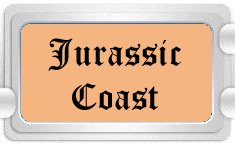The changing face of West Bay
Have you noticed the changes going on at West Bay recently? If you haven't then either you are not a resident or you are not a regular visitor to the area! But West Bay has survived changes before.
The first major change would have been back in the late 19th Century when the Great Western Railway ran the first of the tourist train services. Until this time West Bay had been known as Bridport Harbour. This then gave rise to Pier Terrace, built to accommodate the expected influx of this new trade to West Bay. Pier Terrace was known to the locals as 'Noah's Ark' due to its shape and location. However, in 1905 Sir Frederick Treves (see below) referred to it as "Although in itself architecturally admirable, it looks as out of place as an iron girder in a flower garden."
From the 1920s, a private estate consisting mainly of bungalows was built on the west cliff. West cliff had previously been home to a 9 hole golf course which later located to east cliff to become an 18 hole course. The sea front gained an esplanade and promenade, then holiday chalets were built on part of The Old Shipyard site. More recently, a new housing estate has been built called 'Meadowlands', set a quarter of a mile from the seafront.
During this time of West Bay's development, the sea had its own ideas! The harbour piers and sea wall were continually being damaged, repairs and additional sea defences being a continual war against the elements. Finally a decision was made to rebuild West Bay's sea defences in the form of a new west pier. This would also remove the restriction of the harbour's channel being unusable for almost half of the year due to bad weather. It would also create a new outer harbour with larger and more convenient slipways. So the beginning of the 21st century also saw the beginning of a new West Bay.
Developers have been quick to notice this new opportunity. The remaining open land of The Old Shipyard was purchased by Wyatt Homes at a rumoured £2 million. Planning applications were applied for, causing more unrest in the local community than anything else in West Bay's recent history. Soon after construction of the 'Quay West' development took place in 2005, the Environment Agency produced a report indicating the building to be on flood-risk land.
In the meantime, other planning applications seemed to be going through unnoticed! A development of terraced homes on the east cliff, called 'Beachcomber' have been built. Harbour Garage (one of the last of the old village garages) has been demolished, making way for a new development of flats and shops (Maritime House). Approval was granted for two blocks of three story flats along Forty Foot Way (Driftwood). The Bridport Arms has undergone a complete renovation with substantial extensions, the new roofs being of thatch and slate, thus in keeping with the original.
Since 2000, coaches have been placed on the track beside the restored railway station for various projects, information centre, restaurants, etc.
Had the new harbour improvements not been implemented, then it is unlikely that many of the housing developments would have taken place either, but then West Bay would probably have finished up looking tired and run down. A catch 22?
Regeneration Scheme
Plans submitted by West Dorset District Council for the development of The Mound with a restaurant, new facilities for the Harbourmaster and HM Coastguard were abandoned following the Environment Agency flood risk report. However, the existing public toilets on The Mound have been refurbished. Plans to complete the sea angling jetty next to the Jurassic Pier have also been abandoned. A new visitor arrival facility, including public toilets at the West Bay Road car park was completed in 2009.
The next phase of regeneration consisted of changes to the roundabout at the entrance to West Bay, a new pedestrian crossing point at the junction of George Street with West Bay Road, a priority change at the junction with Station Road and a new pedestrian area between St John's Church and the shops opposite. It was hoped these measures would also calm the traffic speeds into West Bay and deter vehicles that entered West Bay to travel to the end of the Esplanade, turn around and then leave. A complete resurfacing of all roads, including the whole of West Bay Road also took place. The works were completed in Spring 2013.
The future is all about accepting progress and having the ability to adapt and move on. But let's make sure that all this progress is for the overall benefit of West Bay, its residents and its visitors.
Sir Frederick Treves (1853-1923)
Born in Dorchester, Frederick Treves became a member of the Royal College of Surgeons in 1875. In 1884 Treves met Joseph Merrick, better known as 'The Elephant Man'. Although unable to diagnose his condition, Treves rescued Merrick from destitution, creating a home for him in the attic of The London Hospital.
In 1899 Treves became a consulting field surgeon in The Boer War. In 1900 he was appointed as surgeon extraordinary to Queen Victoria. Two days before King Edward VII's coronation in 1902, Edward fell acutely ill with perityphlitis; Treves was called to operate and was made a baronet later that year. Sir Frederick Treves was also a keen athlete, accomplished sailor and prolific writer.
He died in Switzerland of peritonitis, ironically the disease of which he was an expert. His ashes were scattered in Dorchester Cemetery. The funeral service was arranged by his lifelong friend Thomas Hardy, the well known writer and poet of Dorset.











